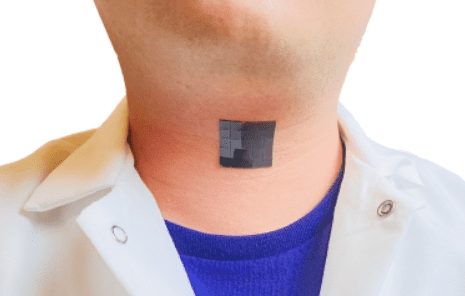- UCLA engineers introduce a groundbreaking wearable device aiding those with speech disorders.
- The device, developed by Jun Chen’s team, utilizes machine learning to achieve nearly 95% accuracy in translating larynx muscle movements into audible speech.
- Comprised of a self-powered sensing unit and an actuation component, the device offers a non-invasive solution for voice disorders.
- The innovative technology marks a significant step forward in disability assistance, following Chen’s prior success with ASL translation wearables.
- With a compact design and high-fidelity functionality, the device holds promise for enhancing communication and quality of life for millions worldwide.
Main AI News:
Cutting-edge technology is revolutionizing the landscape for individuals battling speech disorders, offering newfound hope and independence. Spearheaded by a team of innovative minds at UCLA, a groundbreaking invention has emerged, poised to redefine communication barriers.
Crafted with precision and empathy, this soft, slim wearable device, barely exceeding 1 square inch in dimension, stands as a beacon of progress. Championed by Jun Chen, Assistant Professor of bioengineering at the esteemed UCLA Samueli School of Engineering, alongside his adept collaborators, this bioelectric marvel promises a transformative journey for those grappling with dysfunctional vocal cords.
Harnessing the power of machine learning, this ingenious device boasts an impressive accuracy rate of nearly 95 percent. Through meticulous detection of larynx muscle movements, it seamlessly translates these signals into audible speech, heralding a new era of expression and connectivity.
This groundbreaking innovation follows Chen’s lauded efforts in the realm of disability assistance, echoing the success of previous ventures like the wearable glove, which bridged the gap between American Sign Language and spoken English.
At its core, this patch-like wonder comprises two essential components: a self-powered sensing unit adept at converting muscle-generated signals into analyzable electrical impulses and an actuation component that breathes life into these signals, shaping them into coherent expressions.
Its construction, marked by layers of biocompatible silicone compound and magnetic induction coils, underscores a delicate balance of form and function. Through a fusion of advanced materials and engineering ingenuity, this device emerges as a beacon of hope for those navigating the complexities of speech disorders.
Driven by a relentless pursuit of innovation, Chen’s team leverages soft magnetoelastic sensing mechanisms, paving the way for unprecedented accuracy and reliability. With each development, they inch closer to a future where communication barriers dissolve and voices once silenced find resonance.
The implications of this breakthrough extend far beyond its compact design, offering a lifeline to millions worldwide grappling with voice disorders. As research continues to unveil the full potential of this transformative technology, one thing remains certain: the dawn of a new era in inclusive communication is upon us.
Conclusion:
The advent of wearable technology tailored to assist those with speech impairments marks a significant advancement in the market. With its ability to detect and translate larynx muscle movements into audible speech, this innovation not only offers practical solutions but also embodies a beacon of hope for millions worldwide. As the technology continues to evolve, the potential for widespread adoption and integration into therapeutic approaches signals a promising future for inclusive communication.

